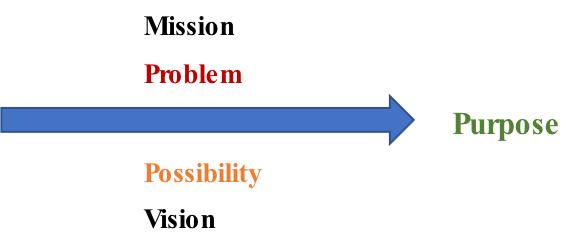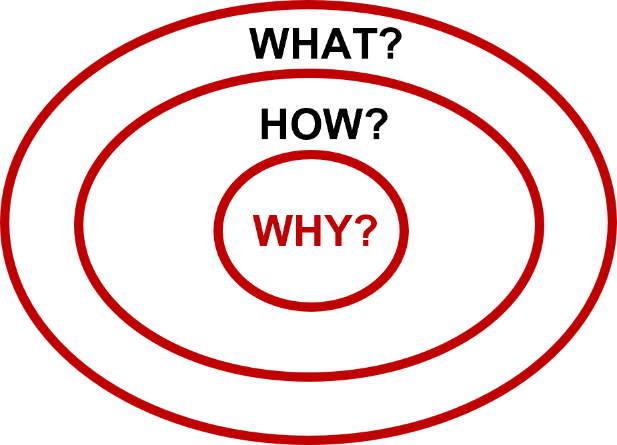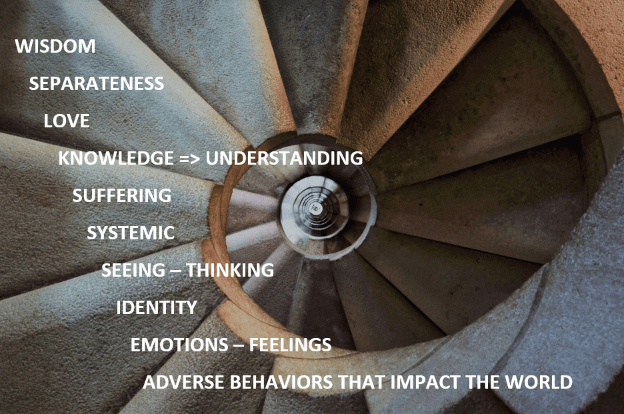by Jim Burns, Illuman Board Member
Illuman is in the first year of our second decade of existence. Work to define our strategy for this phase in our collective life is underway. An initial step involves revisiting our mission and vision (the current version can be found on our About page). This effort began at the recent Oracle leadership retreat, held outside of Austin, Texas. We want to briefly share the process and output of the exercise we engaged in there, as well as the plan to complete and ratify any changes.
But first, this is also a good opportunity for you to reflect on your own personal mission. You do have a mission. We all do, whether explicitly or implicitly, but have you ever fully considered or identified what yours is, and have you “accepted it”? (Cue music from Mission Impossible)
Why Mission and Vision Statements?
Corporations use mission and vision statements to put a more inspiring cover on their inherent purpose, which is most commonly to maximize shareholder value through the growth and optimization of profits.
Non-profit organizations, and especially human beings, are inherently mission and purpose oriented—though, hopefully, with more holistic and life-giving ends than mere profit. Without a clear, intentional mission, distraction and drift are predictable risks. Like goals, strategy, and plans, if a mission isn’t documented, it lacks clarity, focus, and power.
What Are Mission and Vision Statements?
For the Oracle work, we used these definitions:
A Mission statement expresses the organization’s Purpose in the context of a significant Problem (negative force) or situation it seeks to address. It defines a condition to be resolved. It expresses why the organization exists.
A Vision statement expresses its Purpose in the context of a new or different Possibility (positive force) that it seeks to bring into the world. It defines what will be experienced when, or as, the problem condition is being resolved. It creates a vision of a possibility to be lived into.
 A Mission statement does not describe what an organization or an individual specifically does—it’s not a list of capabilities, offerings, or personal attributes. That is a related, different statement that serves a different purpose.
A Mission statement does not describe what an organization or an individual specifically does—it’s not a list of capabilities, offerings, or personal attributes. That is a related, different statement that serves a different purpose.
For individuals, a good analogy is Frederick Buechner’s definition of personal vocation as the place where “your deep gladness and the world’s deep hunger meet.” Both an individual’s and an organization’s purpose and mission are based on your selection of “the world’s deep hunger” you seek to satisfy.
Simply put, a mission statement is a short, simple declaration of an intended aim.
A good way to identify your mission is to ask, as Simon Sinek suggests, “What is your ‘Why’?” Why do we exist as an organization? Why do you exist as an individual? Then, from there, move out to the “How?” and the “What?”
(If you haven’t seen it before, I highly recommend watching at least the first seven minutes of Sinek’s TED Talk, Start With Why.)

Purpose and Mission at Different Life Stages
Regardless of your age or stage in life, a good place to start is by reflecting on your purpose or mission at previous stages in your life. To simplify, consider your life in segments of ten, twenty, or thirty years (depending on your current age and how many major shifts and life stages you’ve experienced so far).
- What was the “problem” in the world you cared most about at that time?
- What were the most important capabilities, gifts, and skills you could use to address that problem?
- What meaning were you creating in your life?
- What was your mission in each of the previous segments of your life?
- How have answers to those questions evolved for you today?
- How do you articulate your personal life mission today?
If you have a Council circle, bring these questions to your next meeting. Work together with your Illuman brothers to uncover any wisdom found deep in each question.
Illuman’s Problem Cascade
We conducted a similar exercise in four breakout groups at Oracle. In order to find the right words for Illuman’s Mission and Vision statements, we first needed to identify and gain consensus for Illuman’s “purpose,” expressed as a single word.
Our intention for this exercise was to avoid a confusing “word salad” process that can easily result when a group lacks clarity about the specific purpose being described.
To do this, we asked:
What is the highest-level problem in the world that Illuman is well-suited to address, that includes lower-level problems, and which, when resolved, would have a significant positive impact for generations to come?
Men in each group started by expressing whatever problems men commonly experience. Then, we kept asking, “Why?” Why does that problem exist? We recorded the problems in each group. Results were clustered into common categories. Each named category was organized in an approximate hierarchy.

This graphic visualizes the results. Please read the Summary of Illuman Problem-Possibility-Purpose Cascade for a better understanding.
The level of a problem category should not be associated with its relative importance. Notice that each problem category can be the cause of related, usually lower-level problems. These categories and the associated explanations and supporting information can be useful in many ways.
One man told me, “Our Council has decided to pray, reflect, and share our feelings about each category, using the supporting explanations.” These problem categories can also serve as simple memory “hooks” for conversations. In conversations with specific men, they can indicate problems to listen for and discuss. For specific audiences, appropriate categories can be selected to be a more targeted and relevant explanation for “Illuman’s Why.”
What’s Next?
We invite every man to review and reflect on this work. Your feedback and input are appreciated. For those so inclined, we invite you to submit suggested language for a short (fifteen words or less) Mission Statement, with an associated Vision Statement (two or three sentences, please). Send suggestions to Bill Weber at weberrva@gmail.com.
At each step in this process, we have allowed the next steps and timing to emerge. We will continue to do so. For Mission and Vision statements to work well on our behalf, they must be clear and compelling, especially for people in the world—they must help us attract new men and organizational partners to our cause. Before they are released into the world, Illuman men are the test case to confirm that our statements meet this objective. Your feedback matters. Thank you.







Leave a Reply
Your email is safe with us.
You must be logged in to post a comment.